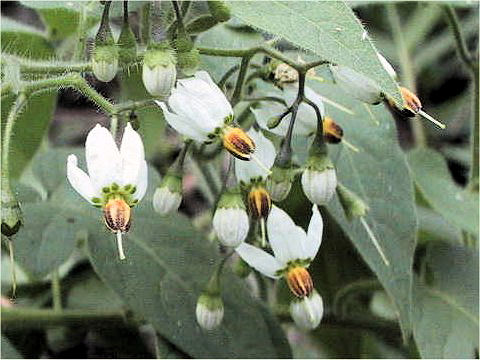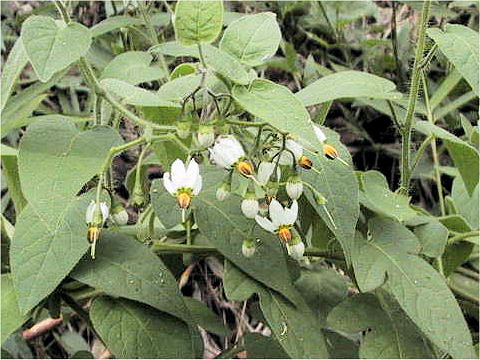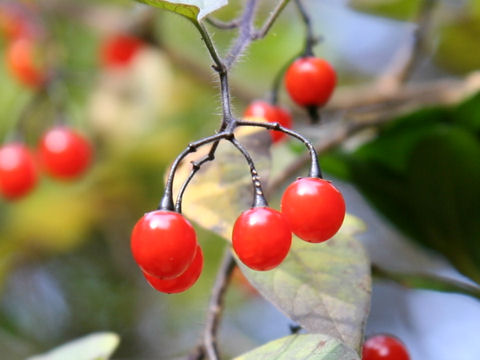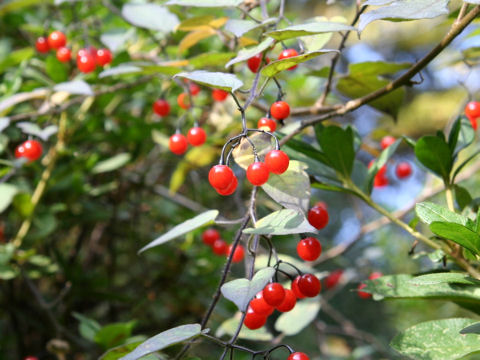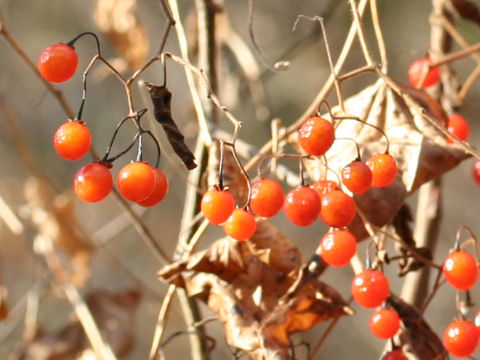
|
The "Hiyodori-jogo" (Solanum lyratum) belongs to Solanaceae (the Potato family). It is a perennial vine that is distributed throughout Japan, as well as Taiwan, the Korean Peninsula, China, and South-east Asia. This climbing vine occurs in open woods and roadsides, and twines other plants with long petioles. Leaves are ovate to oblong, often divide into 3-5 lobes deeply at underneath of the stem. They look like tomato's leaves. From August to September, sparsely cymes of small whitish flowers are seen on terminal stems or axils. Fruits are small round berry and ripen vermillion-red in late fall. They contain poisonous psudo-alkaloid (Solanine). The Japanese name comes from the fact that brown-eared bulbul like to eat the berries. However, it has never been observed. In Taiwanese Chinese, it is called "白英", and "白英" (bai ying) in Chinese.
|

